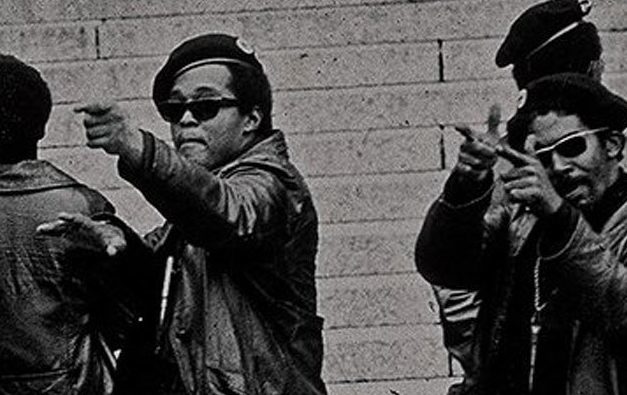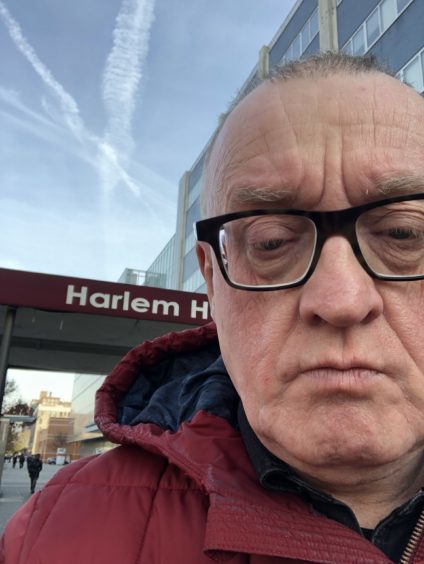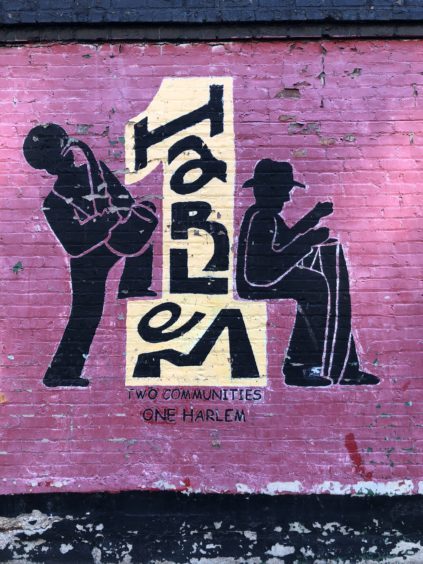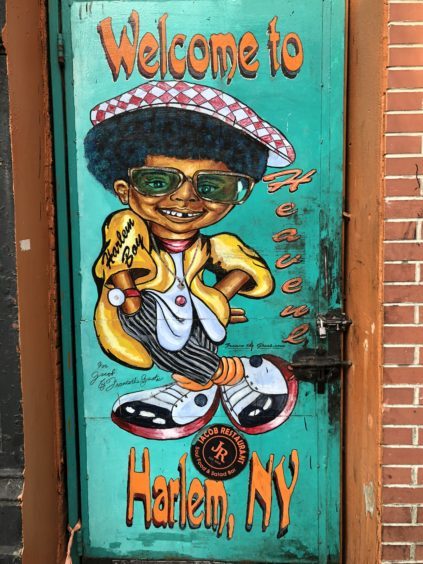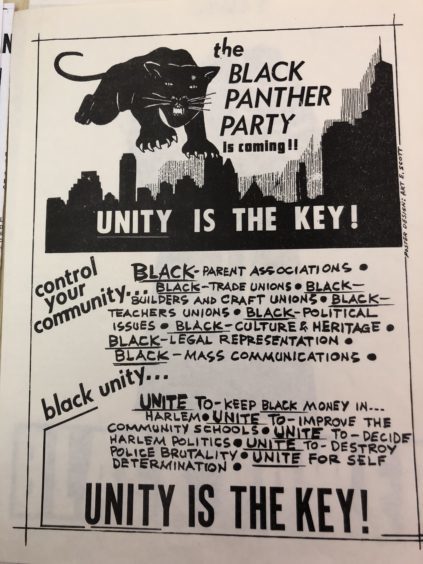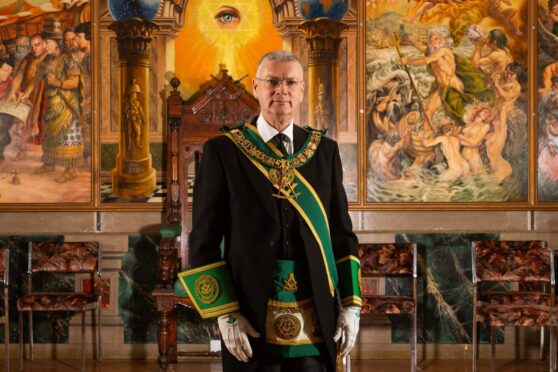Perth-raised journalist and broadcaster Stuart Cosgrove explains to Michael Alexander why he hopes the third and final part of his Soul Trilogy books – Harlem 69 – will stand the test of time as a work of social history.
Harlem: The very name conjures up stereotypical images of young black men, crime, drug dealing and poverty in one of the historically most notorious parts of New York City.
Yet when Perth-raised journalist, broadcaster and author Stuart Cosgrove was researching the third part of his soul trilogy Harlem 69: The Future of Soul he discovered that while Harlem has indeed been left stigmatised by the ravages of crime, gangsters and a darkly vengeful drug problem – the “debris” of which still exist – the neighbourhood has increasingly become gentrified in the 21st century and has continued to develop as an intellectual centre of black American thought.
Stuart’s love affair with soul music and social history dates back to his youth when he was a fanzine writer on the northern soul scene before joining the black music paper Echoes, as a staff writer.
He became media editor with the once mighty music bible NME and a feature writer for a range of newspapers and magazines.
The award-winning broadcaster, probably best known as the co-host of BBC Radio Scotland’s popular comedy football phone-in Off the Ball, joined Channel 4 in 1994, serving for eight years as Controller of Arts and Entertainment and then as Head of Programme (Nations and Regions) until stepping down in 2015.
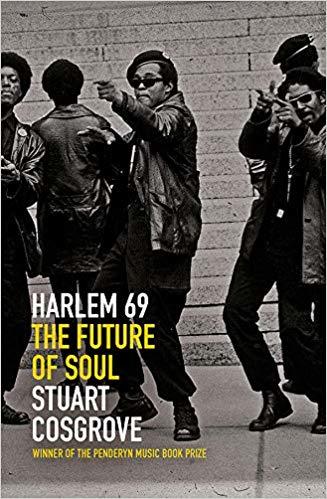
But it was his appetite for life after Channel 4 and his desire to continue his soul music journey that spurred on the holder of a Doctorate in English and American Studies to research and write The Soul Trilogy – three books encapsulating soul music and social change in three American cities during three crucial years.
>> Keep up to date with the latest news with The Courier newsletter
Detroit 67, published in 2015, was the first instalment followed by Memphis 68: The Tragedy of Southern Soul which was announced as the winner of the prestigious Penderyn Music Book Prize in April, with Harlem 69 to be published on October 4.
While it’s been a musical ‘journey’ for him, Stuart, 65, hopes all three books will also stand the test of time as works of social history.
“When I first started thinking about it,” explained Stuart, “I had gone along and watched the movie Dreamgirls with one of my mates – a big soul fan I grew up with in Perth – and we got talking when we left the cinema as to whether Florence Ballard of The Supremes had really been sacked by Motown at the height of the Detroit riots.
“I said, ‘look, I’m going to research this – I’ll find out, blah blah blah’.
“At the time I was looking around for a big writing project to do – I was getting to the stage where I was looking for an ‘escape clause’ from Channel 4 and was looking for a big idea to work on.
“When I started to research that I realised just how prescient the political and social issues were at the time and how soul music sat alongside them.
“I began with Detroit 67 as the opener because in many ways it was the beginning of change if you like with the great soul music of the mid-60s – The Supremes, Four Tops and all of that stuff – and having to face up to quite difficult issues around race and racism around the riots, difficult inner city issues.”
Stuart did a lot of desk research and made several visits to Detroit where he spent a lot of time researching local newspapers in libraries. He found compelling stories from the time that also seemed to connect to the soul scene one way or another.
He found what he was learning was really exciting.
But he had another thought that took him back to his days at the NME where he’d always argued that black music had never really been given the same respect and dignity as rock music had.
“I kind of felt ‘if you don’t write about it now in the UK, who is going to do it?’” he said.
As Stuart got further into his research, he realised that the death of Otis Redding (plane crash, December 1967) and the assassination of Martin Luther King in Memphis in 1968, gave him a “very obvious second book”.
“The challenge of this particular third Harlem book,” he added, “was whether to go with musical moments and genres.
“I realised that Harlem was the biggest and most famous black centre in America.
“It describes itself as a ‘city within a city’. It’s in Manhattan, it’s in New York, but it’s a city apart. It has its own history, its own status.
“But one of the things that springs out from this book is the subtitle The Future of Soul. What the final book does is it brings all the themes of the ‘60s to a conclusion but points forward to the era after.
“The book’s also about the roots of disco, the roots of hip hop, the roots of street funk – all the forms of soul music that came after classic Motown if you like are there in Harlem in 1969.”
It’s also clear from reading Stuart’s trilogy of events in America 50 years ago that a lot of the issues covered have gone “full circle” in “Trump’s America” – the Black Lives Matter campaign, the inner city tensions with kids and the police, the whole question of whether there’s an underclass being left behind.
He also hadn’t come to appreciate until doing the research that racial divides were also not always as clear cut as black v white.
“One of the things that I hadn’t truly appreciated in Detroit until I researched,” he said, “ is you are reading workplace disputes and murders – I was struck by how many people had names from eastern Europe.
“The more that I looked into it, the more I got there seemed to be this core racial divide between young black men who were facing going to Vietnam, a life of unemployment or a life of living in the ghetto, and then these other people who were maybe small shop owners, who were immigrants from a previous immigration.
“I had never really understood that racial tension wasn’t just about black versus white.
“There was other kinds of differentiation going on there. And then the moves to the suburbs – ‘white flight’- in fact quite a lot of middle class black people moved to the suburbs of Detroit after the riots as well.
“That fear of the inner city is a theme that goes through all of the three books.
“Harlem is probably the place where the greatest anxiety about ghetto life was located.”
* Harlem 69: The Future of Soul by Stuart Cosgrove is published by Birlinn on October 4, RRP £16.99.
